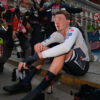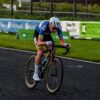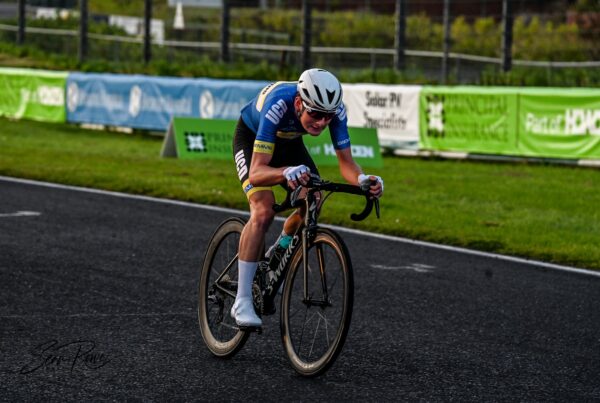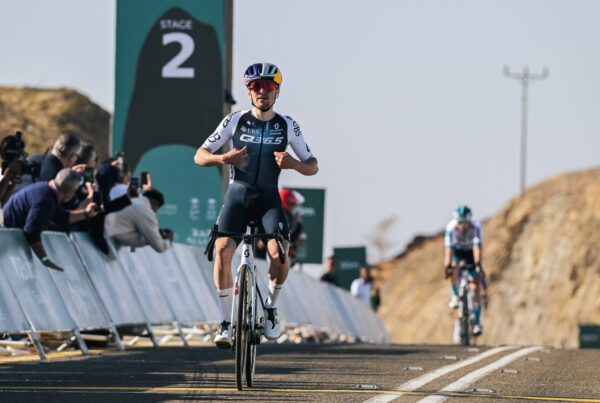
rewrite this content and keep HTML tags
Ben Healy and Ryan Muilen won universal praise for their performances in the Olympic men’s road race in Paris on Saturday. Well, near universal praise. Paul Kimmage – the former pro rider turned journalist – certainly had reservations about the way Healy rode.
When the 23-year said after the race he had played his cards as best he could, Kimmage replied: “Someone needs to teach this kid how to play cards because that was clueless.”
Does he have a point? With the legs Healy had, was going on the attack 90km from the finish the best policy, especially with three late climbs to come and the best riders in the world in the race? Let’s break it down.
There’s no doubt the duo rode our their skins. Mullen went on the attack with almost 200km remaining, going through the breakaway to lead the race solo. And by the time he was caught, it was by his team mate, Healy, along with Elia Viviani (Italy).
From that point, Mullen dragged Healy clear of the chasing pack and he then stayed in contention deep into the final; remaining in medal contention for a long time before finishing 10th. But Healy had made his move with 80km to go. Was that just too far from the finish to go on an all-out offensive?
Someone needs to teach this kid how to play cards because that was clueless:
You’ve got to know when to hold ‘em
Know when to fold ‘em
Know when to walk away
And know when to run… https://t.co/XaYpmlW6fb— Paul Kimmage (@PaulKimmage) August 3, 2024
The first thing to say – though it shouldn’t need to be said – is that Kimmage has earned the right to comment, and some. He is an Olympian and a former pro rider, who was part of many top tier Irish teams, including on the day Stephen Roche won gold at the Worlds in 1987. When it comes to cycling, he knows a thing or two.
However, how does Kimmage’s contention – that Healy should have ridden more strategically – hold up?
Healy’s tactics
Kimmage is not the first person to question Healy’s tactics. He is an all-in rider, bent on total aggression once he has the legs, and his racing style is sometimes questioned when it doesn’t work out. Dan Martin was the same; an attacking rider who sometimes won big, and was the hero, but was criticised and questioned when it didn’t work.
But there is no doubt Healy wins by attacking. And there are two reasons for that. Firstly, he can’t sprint. Secondly, as good as he is – and he is an excellent rider – he is not yet in the very top tier of one-day riders, or stage racers, at present.
And that means, when he’s up against riders who are better sprinters or up against the very best in the world – Remco Evenepoel, Wout van Aert, Mathieu van der Poel and others – he is going to be beaten if he lingers with them.
And so attacking has been the order of the day for Healy. It has brought him wins in the Giro d’Italia 2023, after a attacking the breakaway solo with over 50km to go.
The list of other races he has also won solo, after attacking those he was with, include two national road race titles and GP Industria & Artigianato (1.Pro). He has also taken solo stage wins in: Tour de l’Avenir (2.Ncup), Ronde de l’Isard (2.2U), Baby Giro (2.2U), Škoda Tour Luxembourg (2.Pro) and Settimana Internazionale Coppi e Bartali (2.1).
In short, he can’t win in a sprint, he would find it hard to beat the very best in the world and so he attacks.
Why go from 90km out?
Gone are the days when the finals of pro races began in the last hour. Even since action resumed after the first Covid-19 break, the intensity of racing has changed. It’s often very hard from the gun. And even if it eases off, the finals very frequently begin two hours from the finish, not one.
The big name riders have never – certainly not in recent decades – been as willing to simply go for it from 60km out, or more, than the current generation.
And that has resulted in a style of racing where lingering too long in the bunch – following the best and hoping to strike very deep into a final – is obsolete. These days, if wait and wait, the best riders – and the wins – will be long gone up the road. If you want to win, or even get on the podium, in major one day races now, you need to be willing to start your final two hours from the finish.
In the Olympics, Healy knew he had just one team mate, in Ryan Mullen; one of the best lead-out train riders in the business. But Mullen is also one of the bigger guys in the bunch and was never going to be able to whip up the final climbs last Saturday in support of Healy.
He either had to do what he could for Healy early in the race or get up the road and hope to be able to help him deeper into the event. In the end, he did both; Mullen rode the perfect race. They were also competing against nations with three and four-rider teams, comprised of very strong riders. Some nations had riders with at least two riders stronger than Healy.
Outnumbered and outgunned – in a straight shoot-up – they opt to take flight in the hope only a very small number of riders would ever catch Healy, thus increasing his chance of a medal.
Sure, Healy still could have waited a little longer. But Mathieu van der Poel tried that. He attacked a few times on the circuits and when he was counter-attacked by Evenepoel, even Van der Poel got caught out; left behind. Valentin Madouas (France) was luckier; waiting and choosing the right move, and getting the silver medal. But he was still in the same game of chance as Van der Poel, he was just luckier than the Dutchman.
And that was the major risk for Healy if he waited; going with the wrong move, that got caught, only to miss out when the right one went. Waiting meant a game of chance, with likely no team mate to close a gap on the harder terrain if bad luck began to set in.
Healy was aiming for a medal
Had Healy simply wanted to get “the best result possible” then he should have been more strategic. But he wanted a medal. And that meant he had to take chances. He is a rider who likes to win, or certainly go close. And he is a rider who has to gamble to win; he has to get ahead when racing against the very best.
Had he waited, he may have followed Van der Poel and Van Aert when they attacked and then got left behind when Evenepoel went. He also may have gotten into the group that Evenepoel caught and went through, and maybe he then would have ended up with Evenepoel and Madouas and taken silver or bronze.
But that only would have happened if he was lucky enough to follow the successful solo attack of Evenepoel and then been able to hold. Nobody else in the race was able to do that.
In summary, it’s easy to say he should have been more strategic and kept his powder drier for longer. The reality is, even if he did that, he might have followed the wrong attacks a little later or simply been unable to hold Evenepoel.
In the new racing, two-hour finals are not uncommon. And getting ahead before the bombs start going off is the best option, especially in a race like the Olympics, for a rider with Healy’s characteristics.
.
.
.
#Paul #Kimmage #point #Irish #mens #tactics #Olympics
Source link







